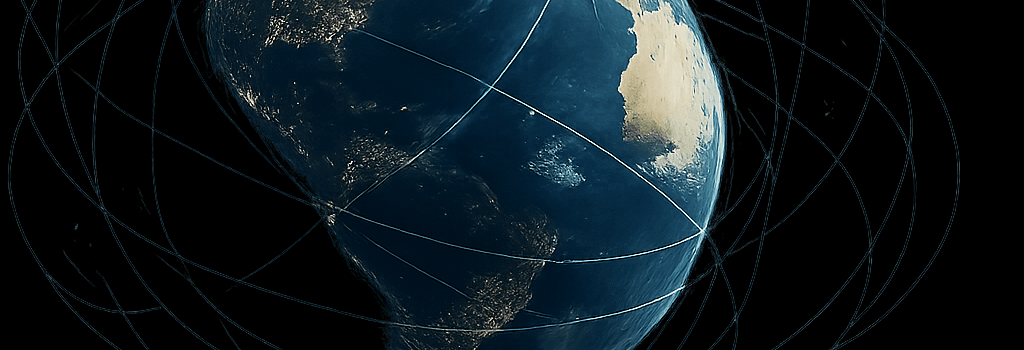Space Force’s Advanced Orbital Traffic Control and Warfare Awareness

For the past two years, Col. Raj Agrawal led Mission Delta 2 at Peterson Space Force Base, Colorado—a dedicated unit now charged with tracking and characterizing nearly 50,000 human-made objects in low-Earth orbit (LEO). As space becomes more contested, congested, and competitive, the Space Force has shifted from basic cataloging to full-spectrum Space Domain Awareness (SDA): discerning adversary intent, predicting maneuvers, and delivering real-time warnings to allies, civil agencies, and commercial operators.
From Situational to Domain Awareness: A Paradigm Shift
Historically, Space Situational Awareness (SSA) meant maintaining an orbital catalog: positions, velocities, and conjunction predictions. Today’s SDA adds layers of intelligence, targeting, and predictive analytics. Gen. John “Jay” Raymond coined SDA to emphasize operational outcomes—understanding not just where objects are but why they move, who controls them, and how they might pose a threat.
Technical Underpinnings of the SDA Architecture
- Sensor Fusion: Ground-based radars (C-band Space Fence array), optical telescopes (the upgraded Space Surveillance Telescope), and space-based sensors (SBSS and upcoming GEO sensors) feed a unified data lake.
- High-Performance Compute: An on-premises HPC cluster augmented by cloud bursting processes terabytes of tracking data per day, computing state vectors, covariance ellipsoids, and risk indices in real time.
- AI/ML Pipelines: Machine-learning models automatically cluster new tracklets, flag anomalous maneuvers, and classify behavior patterns—such as proximity operations or potential rendezvous attempts.
Tracking the Red Order of Battle
Agrawal refers to roughly 2,200 “high-interest” objects as the “red order of battle.” These include Chinese Shijian inspection satellites, Russian Luch-5 relay craft, and potential co-orbital ASAT platforms. Each object is profiled with:
- Orbital Elements: Keplerian sets updated via batch least-squares and Kalman filters.
- Covariance Metrics: Uncertainty ellipsoids computed in six-degree-of-freedom to quantify tracking confidence.
- Behavioral Baselines: Historical maneuver archives cross-referenced with state-sponsored doctrine to predict future activity.
Modernizing the Space Catalog with Space Fence and SST
Since its activation in 2020, the Air Force Space Fence at Kwajalein Atoll has detected objects down to 4 cm in LEO, doubling track density. Complementing it, the Space Surveillance Telescope in Western Australia provides rapid sky surveys, generating 3 million detections nightly. Integrating these sensors into Mission Delta 2’s architecture increased catalog refresh rates from hours to minutes.
Conjunction Analysis and Collision Avoidance at Scale
- 263 million conjunction notifications sent in FY 2024, leveraging a microservices API that commercial operators and foreign partners ingest via secure ASN.1 links.
- Peak workload: up to 1 million daily assessments—each computing closest-point-of-approach (CPA), probability of collision (Pc), and recommended Δv maneuvers.
- Integration with Department of Commerce’s Office of Space Commerce: a hand-off plan to allow Mission Delta 2 to focus on national-security cases while civil notifications migrate to industry-driven portals in 2026.
International Collaboration and Policy Challenges
Mission Delta 2 works with the European Space Agency’s Space Situational Awareness Programme, the U.S.–EU Incident Prevention Working Group, and the Inter-Agency Space Debris Coordination Committee (IADC). Yet policy gaps remain:
– The 1967 Outer Space Treaty prohibits weapons of mass destruction in orbit but is silent on conventional counterspace systems.
– No formal incident-reporting standard for non-cooperative maneuvers or unannounced debris-forming tests.
Agrawal stresses that transparency—technical data exchanges, pre-launch notifications, standardized maneuvers declarations—remains the best hedge against accidental escalation.
Deep Dive: Sensor Fusion and Data Architecture
Mission Delta 2’s datacenter ingests multi-format feeds—radar returns (IFF, range, doppler), optical angles, signal intelligence logs—into a Kubernetes cluster. A real-time stream processor (Apache Kafka) queues tracklets for ML classification, while a data lake (Apache Parquet on S3-compatible object storage) archives raw measurements. Custom C++ kernels perform least-squares orbit determination at sub-second latencies. Analysts then utilize Python dashboards with Jupyter notebooks to validate automated alerts before issuing official warnings.
Deep Dive: Space Warfare Doctrine and Legal Framework
Space Command’s legal cell defines “hostile acts” in orbit—jamming, blinding, grappling, direct-ascent or co-orbital ASAT operations—under U.S. Code Title 10. The challenge lies in attribution and intent:
– Is a maneuver an inspection or a prep for interference?
– Does the release of small satellites or “spacecraft constellations” constitute an offensive buildup?
International legal scholars argue for a new UN Convention on “Responsible Behaviors in Outer Space,” codifying pre-coordination protocols and mutual debris mitigation commitments.
Future Outlook: AI, On-Orbit Servicing, and Hypersonic Threats
Looking ahead, Mission Delta 2 will integrate data from DARPA’s Blackjack and Tipping Point sensor constellations, enhancing real-time global coverage. On-orbit servicing vehicles—Northrop Grumman’s MEV and Astroscale’s ELSA—will require new proximity-operation safety standards. Simultaneously, tracking hypersonic boost-glide vehicles and counterspace weapons will demand expanded C2 architectures and new RF and EO sensor networks in GEO.
Implications for Commercial Space Operators
Starlink and Kuiper—now at 8,000 and 4,500 satellites respectively—share flight-plan data through a secure, RESTful API. Automated collision-avoidance algorithms onboard these constellations ingest SDA feeds to autonomously execute collision-avoidance maneuvers, reducing operator workload. Agrawal envisions a future where civil and commercial traffic safety is wholly managed by the Office of Space Commerce, leaving Mission Delta 2 focused exclusively on national-security threats.
Conclusion
As space traffic density grows and geopolitical tensions extend into orbit, the role of the military’s chief orbital traffic cop has never been more critical. Through advanced sensors, AI-driven analytics, and international cooperation, the Space Force aims to maintain a safe, sustainable, and secure orbital domain—ready to deter or defeat adversary threats at 17,500 mph.